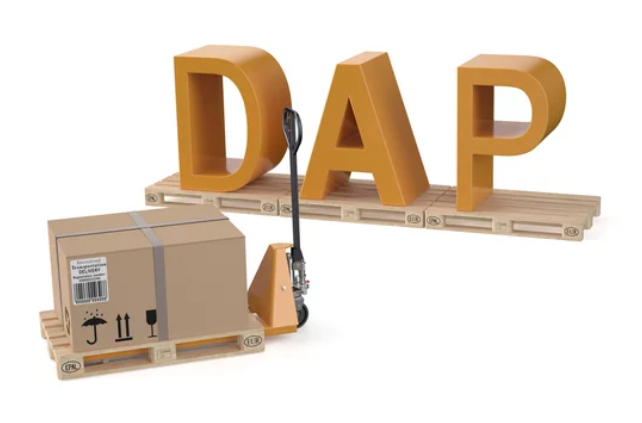What is DAP (Delivered At Place)?
Posted on: 22/10/2024

Here’s a detailed breakdown of DAP (Delivered at Place):
1. Seller’s Responsibilities
Under DAP, the seller has several important duties:
Transportation to the Agreed Destination: The seller arranges and pays for the transportation of the goods to the specified destination. This could be a factory, warehouse, port, or any location agreed upon in the contract.
Risk and Responsibility During Transit: The seller bears the risk of loss or damage to the goods during transit. This responsibility remains with the seller until the goods arrive at the designated place.
Export Customs Clearance: The seller handles all export procedures, including export duties, permits, and any related documentation.
No Obligation to Unload: Once the goods reach the destination, the seller is not responsible for unloading them. Unloading is the responsibility of the buyer.
2. Buyer’s Responsibilities
The buyer also has several responsibilities under DAP:
Unloading the Goods: Once the goods arrive at the agreed location, the buyer is responsible for unloading them, which may involve organizing labor or equipment and covering any related costs.
Risk After Delivery: Once the goods are delivered to the specified place, the risk shifts from the seller to the buyer. Any damage or loss that occurs after this point is the buyer’s responsibility.
Import Customs Clearance and Duties: The buyer is responsible for handling customs clearance at the destination country, including paying import duties, taxes, and adhering to local regulations.
3. Delivery and Transfer of Risk
a. Delivery at the Agreed Destination
Under DAP, the seller’s delivery obligation is fulfilled when the goods are delivered to the specified location. This can be a warehouse, port, or another location that the buyer has designated.
b. Transfer of Risk
Risk transfers from the seller to the buyer as soon as the goods arrive at the agreed destination, ready for unloading. From this point on, any loss or damage is the buyer’s responsibility, even though the seller handled transportation.
4. Comparison with Other Incoterms
DAP vs. DDP (Delivered Duty Paid):
In DDP, the seller not only delivers the goods to the destination but also pays for all customs duties, taxes, and import formalities. In DAP, the seller is only responsible for transportation, while the buyer takes care of import duties and customs clearance.
DAP vs. CIF (Cost, Insurance, and Freight):
CIF is only used for maritime shipping and requires the seller to pay for shipping and insurance to the destination port, but not beyond. In contrast, DAP can be used for all modes of transportation and requires the seller to deliver to a specific location, not just a port, and doesn’t include insurance unless otherwise agreed.
DAP vs. EXW (Ex Works):
EXW places the majority of the responsibility on the buyer, requiring them to arrange for transportation and take over risks from the seller’s premises. In DAP, the seller assumes responsibility for shipping the goods to the final destination.

5. Advantages of DAP
Convenient for the Buyer: With DAP, the buyer does not have to arrange or manage the logistics of transportation. The seller handles all transportation costs and risks until the goods are delivered, making it easier for the buyer to receive the goods without logistical concerns.
Suitable for All Transport Modes: DAP can be applied to any mode of transportation, including sea, air, rail, and road, making it a flexible choice for international shipments.
6. Real-World Example of DAP
A company in France purchases machinery from a manufacturer in Japan under DAP terms, with delivery to a factory in Paris. The Japanese seller arranges and pays for transportation to France, ensuring the goods are delivered to the factory. Once the machinery arrives at the Paris factory, the French company is responsible for unloading the goods and completing customs clearance, including paying any import taxes. The risk of damage or loss shifts to the French company as soon as the goods are delivered to the factory.
7. Conclusion
DAP (Delivered at Place) is a practical and widely used Incoterm for international trade, where the seller assumes responsibility for shipping goods to a specified location, while the buyer handles unloading and import formalities. This term is ideal for buyers who want the seller to manage the transportation logistics but prefer to handle customs duties and taxes themselves. It offers flexibility in terms of transport modes and reduces the logistical burden on the buyer during the shipping process.